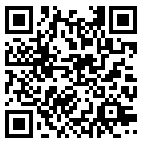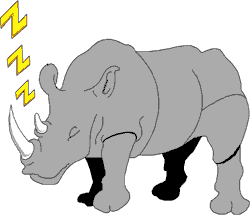
|
WakeupDiet™.com |
Hypothalamus. Narcoleptics don't have the normal regulatory functions of the hypothalamus.1 This structure resides above the brain stem, at the base of the brain.2 The hypothalamus controls time-related body functions such as body temperature, thirst, hunger, and wakefulness. Even sex drive comes under the jurisdiction of this peanut-size region of the brain.3 But in narcoleptics, the hypothalamus can't produce a sufficient amount of the neuropeptide orexin (hypocretin). Orexin is essential to both vigor and the regulation of circadian rhythms. Yet a narcoleptic hypothalamus contains precious few orexin neurons.4
Not sleep disorders. Jet lag and narcolepsy aren't really sleep disorders. Since the hypothalamus serves an overall regulatory function, throwing it out of kilter can cause many problems. Only some of these problems relate to sleep. Symptoms. At right are symptoms that we've observed in narcoleptics. (Fortunately, not all symptoms occur at the same time.) Many of the same symptoms are common in normal individuals with jet lag, flu, or hangover. While these three disorders aren't equivalent, they share a time-shift or phase-lag component. That is, they all upset the body's circadian clock. Phase lag. In the case of flu, a virus causes the main damage. Yet while fighting the virus, the body is likely to stop tracking its normal dayparts. As with narcolepsy, when timekeeping goes awry, the disorder takes on a phasal dimension. So many aspects of our existence depend on synchronization with daily internal schedules: For example, sleep-wake cycles, hunger, regular bowel movements, body temperature and more. After some malady upsets the circadian clock, the clock loses sync. The whole body falls out of homeostasis. Normal day and night routines might proceed, but they lose coordination, or occur at inappropriate times. We mentioned four examples of phase-lag disorders. Many other common ailments might also reset the clock. For example, perimenopause, including dizziness, nausea, indigestion and food craving. Introducing the Wakeup Diet™The Wakeup Diet is the first program that deals with narcolepsy's chronobiology. Like diets by Drs. Charles Ehret5 and Sidney Baker6, the Wakeup Diet can also relieve jet lag. The Wakeup Diet has three goals...
The idea behind the program is this: The subconscious brain programs sleep, hunger and activity level. This internal program isn't set in stone. Instead, it's merely a default. You can alter the program by systematically varying resting, eating and exercise behaviors.7 There are other salient programming methods, such as avoiding certain emotions, including sadness. Now you can build a new program that provides sleep, hunger and activity level matching behaviors of everybody else. This program, the Wakeup Diet™, also tends to synchronize the internal organs and the immune system to one another. Result: Homeostasis. A stronger, more healthy, better performing body and mind. Athletes in training follow a parallel method. They demonstrate what excellent results are possible. How the Wakeup Diet affects energy. In narcoleptics and everyone else, rising blood glucose levels reduce the amount of the neurotransmitter orexin.8 Then, as research proves, eating can cause fatigue.9 Starches (sweets, glucose-rich or high-glycemic foods) have the greatest impact. During the workday, the Wakeup Diet restricts starches and total caloric intake. Result: Vigilance and focus. The Wakeup Diet also restricts fats. Fats slow the digestive process and could inhibit the absorption of glucose, keeping orexin low. By burning glucose, exercise can also promote energy. The Wakeup Diet uses exercise in the morning to improve alertness. Your midday meal will be a small portion of protein.10 Nothing else. In the evening, exercise promotes both hunger and fatigue. The Wakeup Diet uses these effects to integrate sleep into the nighttime hours. The four pillars of the Wakeup Diet
The two parts of the Wakeup DietTimed diet and exercise are the two main parts of the Wakeup Diet. Followers practice both every day. By itself, neither component works adequately. Unregulated phasal disorders are too powerful for a half-baked approach. On the other hand, the body responds to strong, chronobiological cues. A properly timed diet plus exercise produce satisfing results. The element of timing makes this program unique. Each part of the program follows a fixed schedule that repeats every day. That is, the time of day (daypart) determines activity level and eating behavior. Timing of exercise and meals is essential. Without proper timing, good nutrition and exercise alone are ineffective. Sleep times and sleep duration must also adhere to the schedule. No temporary fixes. The program is strategic and not tactical. For this reason, the Wakeup Diet forbids temporary "fixes," such as snacking to "increase the blood sugar." The cost of temporary "fixes" is sleep or cataplexy attacks. Avoiding such fixes drives the body toward stable performance. Here are some examples of forbidden substances and behaviors...
Footnotes1. John K. Young, Hunger, Thirst, Sex, and Sleep: How THe Brain Controls Our Passions (Lanham, Maryland: Rowman & Littlefield Publishers, Inc., 2012), 97-100. • Re: Narcoleptics missing some hypothalamus functions 2. Ibid., 7-9. • Re: Hypothalamus location 3. Ibid., 2. • Re: What hypothalamus controls 4. Ibid., 96-100. • Re: Orexin regulates vigor & circadian rhythms; narcoleptics have few orexin neurons. 5. Dr. Charles F. Ehret & Lynne Waller Scanlon, Overcoming Jet Lag (New York: Berkley Books, 1983). • Re: Diet and exercise program for Argonne Labs reduces jet lag by restoring circadian rhythms: Emphasis on protein with low carbohydrates. Scheduled exercise and eating sessions. 6. Sidney MacDonald Baker, M.D., The Circadian Prescription (New York: G.P. Putnam's Sons, 2000). • Re: Smooth, even energy all day, including recipes with basis in Ehret's work. 7. Ray Sahelian, M.D., Melatonin: Nature's Sleeping Pill (Marina Del Rey, California: Be Happier Press, 1995), 53-54. • Re: Programming the hypothalamus and pineal with light, temperature, meal schedule, physical activity, or social schedule. 8. R. Ouedraogo, E. Näslund, A.L. Kirchgessner, “Glucose Regulates the Release of Orexin-A from the Endocrine Pancreas,” Diabetes 52, no. 1 (January 2003): 111-7. See page 111. • Re: Glucose vs. orexin. 9. D. Bruck, S. Armstrong, G. Coleman, “Sleepiness After Glucose in Narcolepsy,” Journal of Sleep Research 3. (September 1994): 171-179. • Re: Glucose increases sleepiness, especially in narcoleptics. 10. Heather Twist, “Eggs and Orexin,” Eating Off the Food Grid Blog. http://eatingoffthefoodgrid.blogspot.com/2012/08/eggs-keep-you-alert.html, (October 26, 2012). • Re: Eggs promote wakefulness. Sugars cause sleepiness. |
Symptoms of Phasal Disorders
|
|||||||||||
Go to Page: 1 2 3 FAQ Links Next

